Why I Put This Ultimate Guide Together
There’s something deeply personal about tamago kake gohan that goes beyond its simple ingredients. This classic Japanese dish is a nostalgic favorite for many of us.
Tamago Kake Gohan has always been a staple in my diet growing up. It was simple, cheap, and versatile, and it really satisfied me. I’ve been eating this snack for breakfast, lunch, dinner, and late-night snacks ever since I was young.
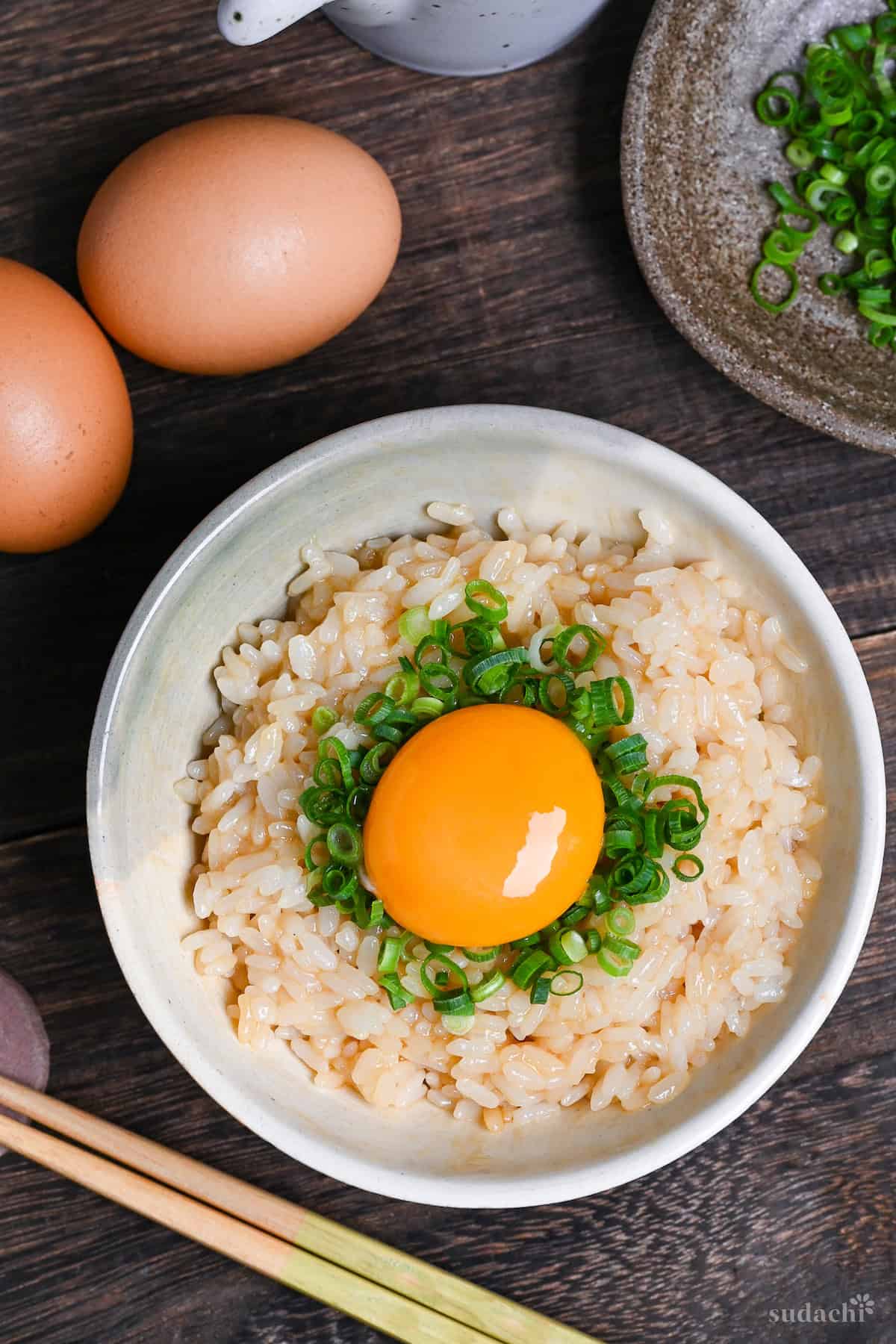
After decades of experimenting with countless (literally) variations, from my childhood to now, I want to share my best way to make “TKG” with 15 different topping combinations that enhance the fundamental magic of egg and rice.
For those of you who’ve been chasing that perfect tamago kake gohan from your past, or if you want to connect with this cornerstone of Japanese home cooking, or if you’re just starting out, this guide is for you.
Different Styles of TKG
Tamago kake gohan might look simple, but this has been refined since around 1872. There are so many styles and modern takes that have been developed to enhance its subtle perfection.
Each style has its own unique texture and flavor, so you can find the one that reminds you of your favorite memories or just what you want to try in the future. I’ve put together a list below that compares the most popular TKG styles and talks about what makes each one special.
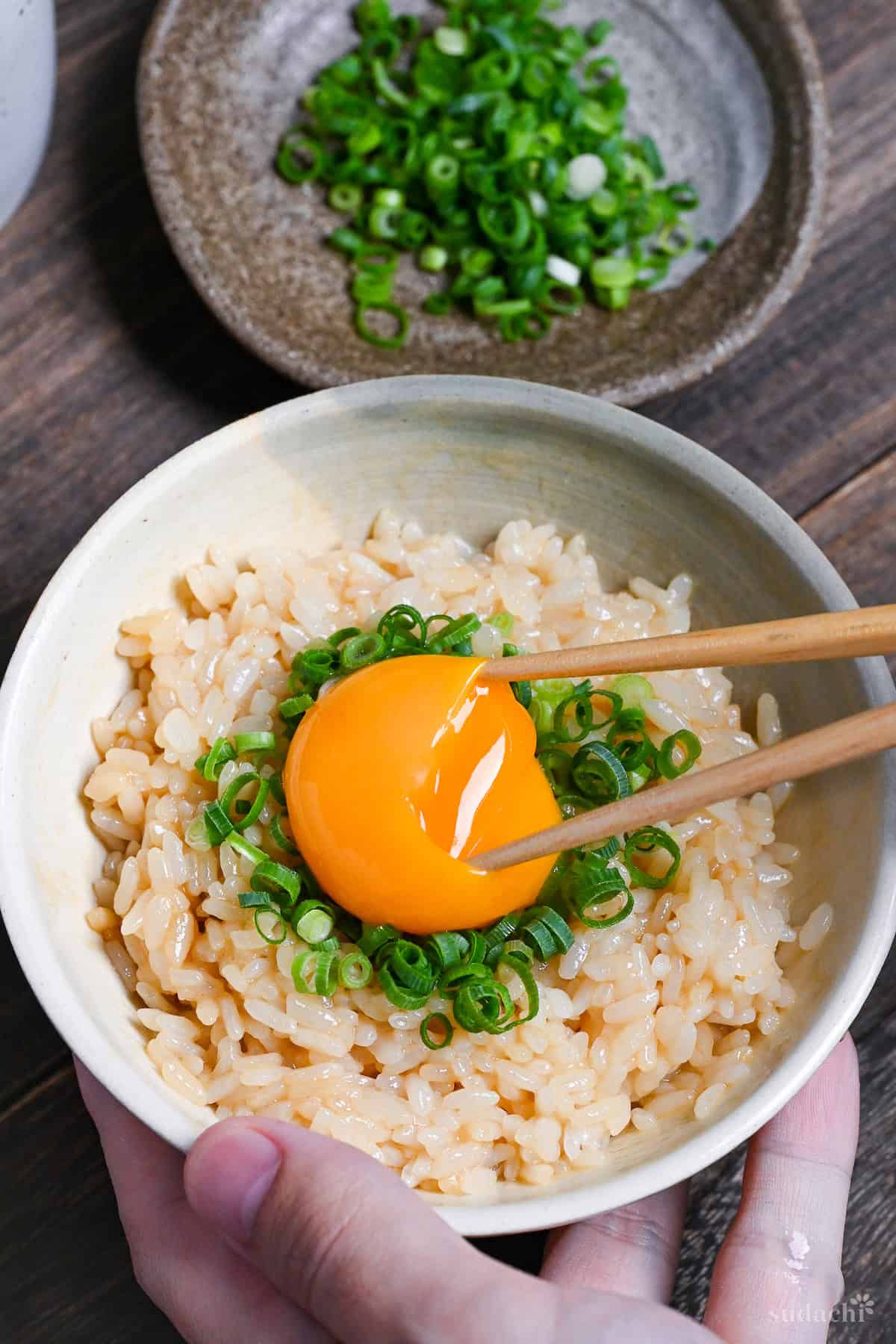
| Style | Flavor Profile | Texture | Ease of Preparation |
|---|---|---|---|
| Classic Style (Sunrise Method) | The most standard. Balanced egg umami with sauce. Creates a flavor gradient, egg richness first, followed by savory soy notes. | Creamy moisture that evenly coats each rice grain. Neither too runny nor too thick. The quintessential Japanese comfort texture. | ★★★★★ |
| Yolk-Only TKG (Only You) | Concentrated egg richness. Significantly more intense flavor without the whites. | Rich and luxuriously creamy without the slickness of whites. Golden yolk creates a visually stunning presentation. | ★★★☆☆ |
| Onsen Tamago TKG | Enhanced yolk richness with a refined, mild flavor. No raw egg aroma. | Tender, jiggly whites with a creamy yolk that coats rice like a sauce. Has more body than raw egg versions. | ★★☆☆☆ |
| Soy-Marinated Yolk TKG (Dark Side) | Ultimate flavor bomb, concentrated yolk with deep soy richness. Almost cheese-like intensity after overnight marination. | Sticky, semi-solid yolk with pudding-like elasticity when broken. Rice stays firm without becoming watery. | ★★☆☆☆ |
| Meringue TKG (Full Moon) | Initially mild, with a burst of rich yolk when bitten into. Highlights the distinct character of both white and yolk. | Airy, meringue-like whites with a creamy yolk center. Offers a dessert-like textural contrast between fluffy and silky. | ★☆☆☆☆ |
All in all, for those seeking to recreate that perfect memory of TKG from your past, I recommend starting with the Classic Style to master the fundamental technique, then exploring other variations.
- The Fall: Minimalist approach, simply drop the egg onto rice without mixing.
- Shooting Star: Basic method, add egg and soy sauce, then mix together.
- Flying Nimbus: Whip egg yolk and white to meringue consistency, mix with a small amount of soy sauce.
- Typhoon: Mix egg white with rice first, then top with yolk and drizzle soy sauce.
- I Miss You: Use only the yolk for “Only You” style, then mix the leftover white with rice and a little soy sauce.
- Day After Tomorrow: Freeze the egg yolk, then thaw before placing on rice and adding soy sauce.
- Summer Salt: Use salt instead of soy sauce as the seasoning.
- Get Wild: No seasonings at all, just egg and rice in their pure form.
- SKG: Just soy sauce on rice, no egg (questionable classification).
- TK: Just egg and soy sauce, no rice (even more questionable).
- Imagination: Prepare egg, rice, and soy sauce, but don’t eat. Feel it, don’t eat it (purely theoretical).
Note: Some of these styles push the boundaries of what constitutes tamago kake gohan and may be considered experimental or humorous variations.
The Ultimate Way to Prepare TKG
The secret to making an extraordinary tamago kake gohan is in the seasoning. It’s a crucial element that I’ve experimented over the years. After trying a ton of different options, nothing beats Terakoya’s “Tamago ni Kakeku Shoyu” in my opinion, a special soy sauce made just for Tamago Kake Gohan.

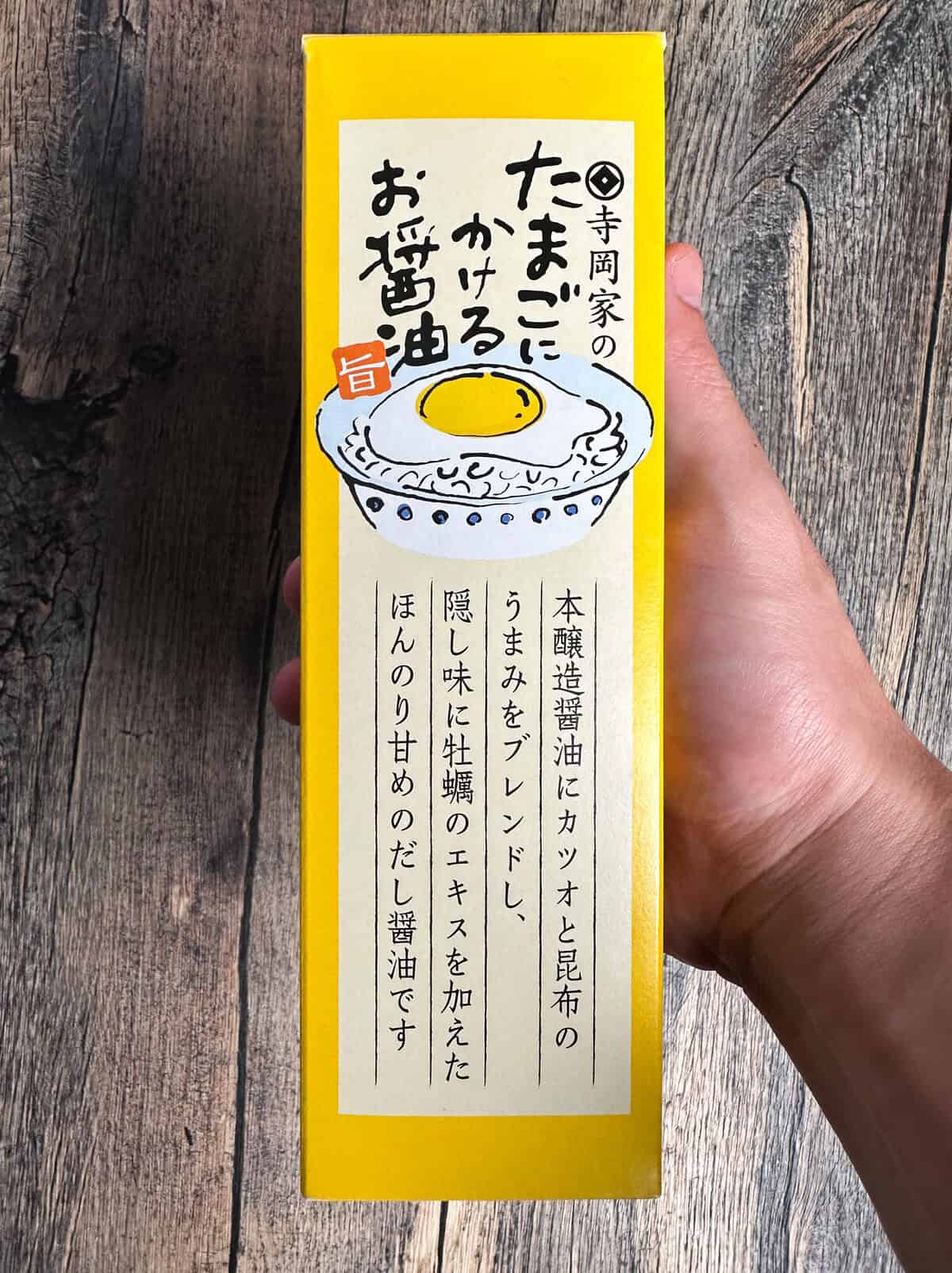
For those outside Japan, I’ve meticulously reverse-engineered this special sauce by analyzing its ingredient list and experimenting to make my homemade version.
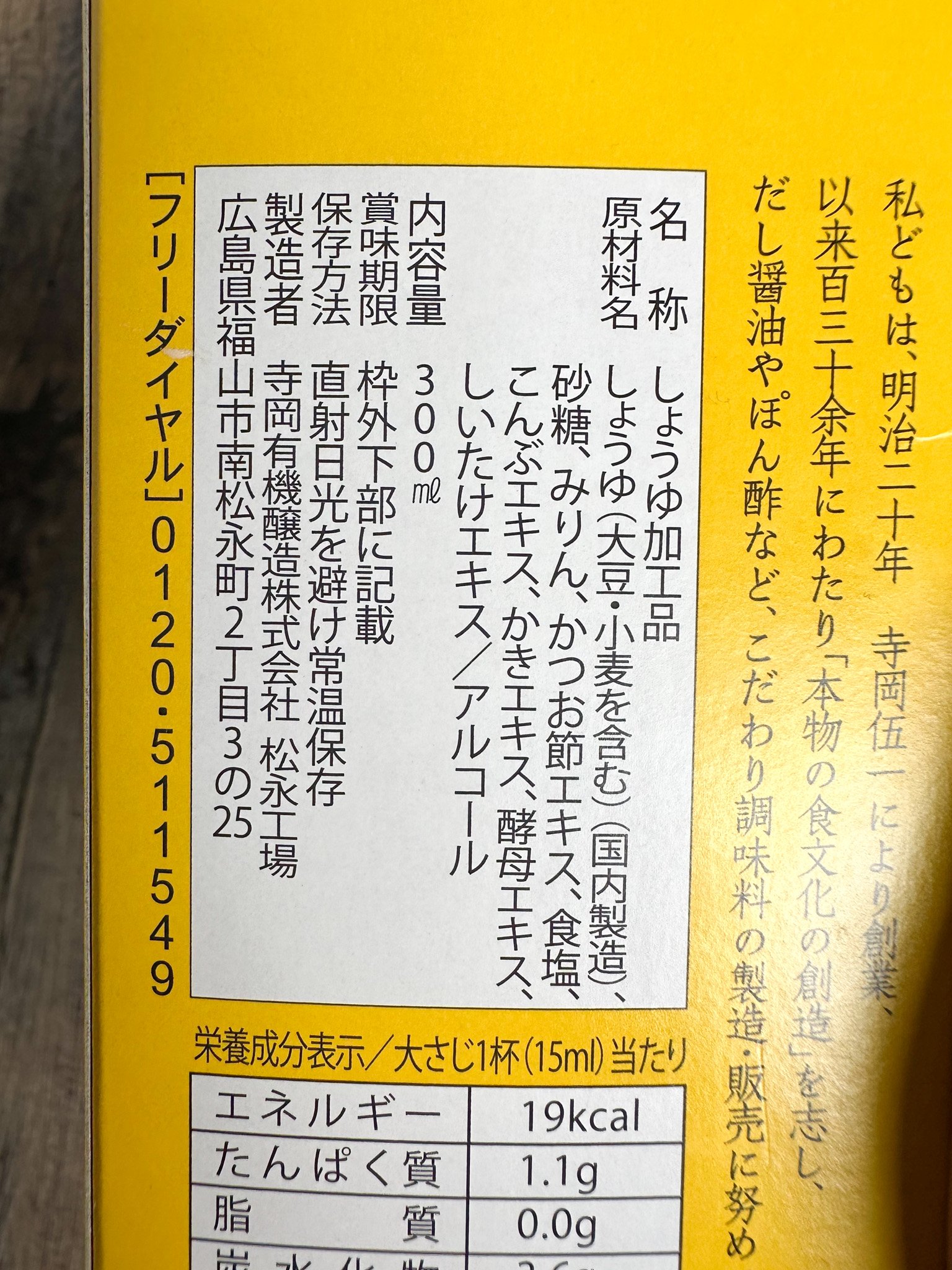
The magic happens through three critical flavor dimensions: deep umami from dashi elements, a hint of sweetness, and that distinctive oceanic note from oyster extract.
Let me walk you through my definitive preparation method!
Scoop out about 150 g of freshly cooked Japanese short-grain rice and transfer it to a serving bowl.
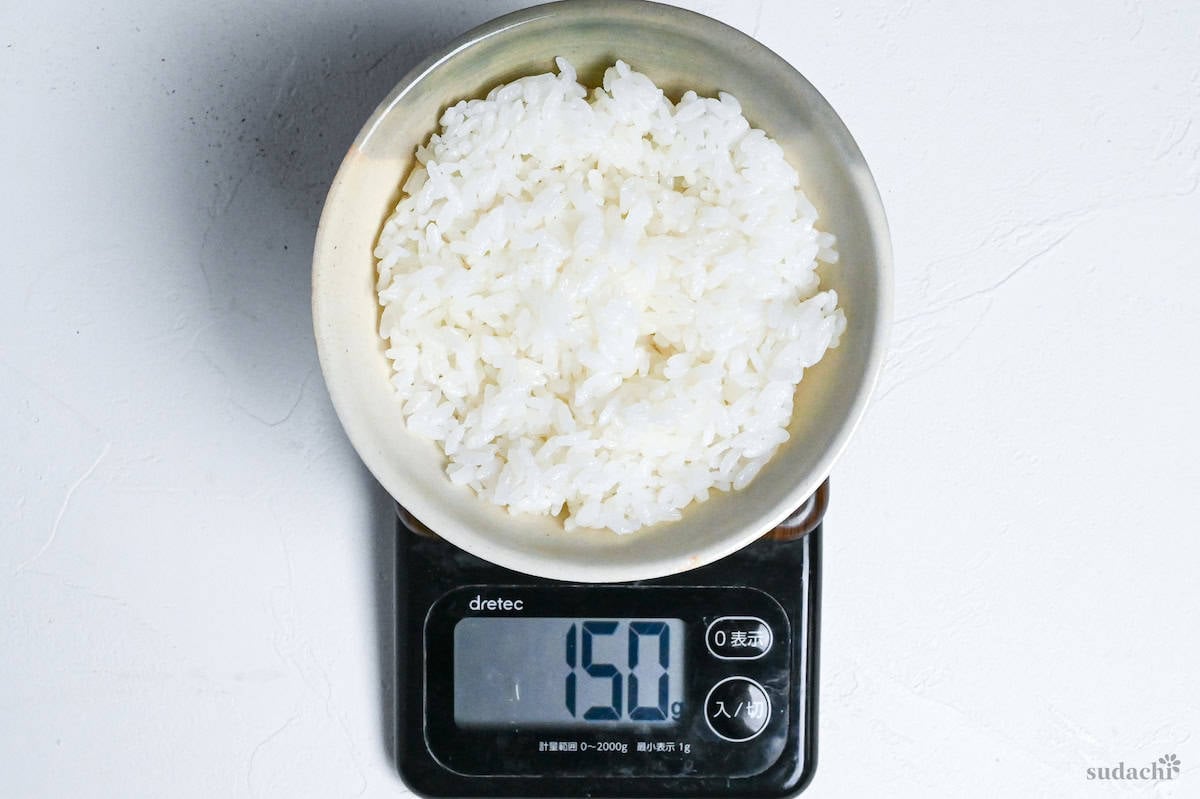
If you’re new to cooking Japanese rice, check my rice cooking guide!
Piping-hot rice straight from the cooker sits close to 100 °C (212 °F). Egg whites begin to set around 60 °C (140 °F), so pouring a raw egg over steaming grains will create unappetizing white streaks. You can tell it’s done when it feels warm, not hot, when you hover your palm over the surface.
If you’re in the U.S., make sure to use large pasteurized eggs. They’re raw but have been heat-treated for safety. Crack the egg and separate the yolk and set it aside.
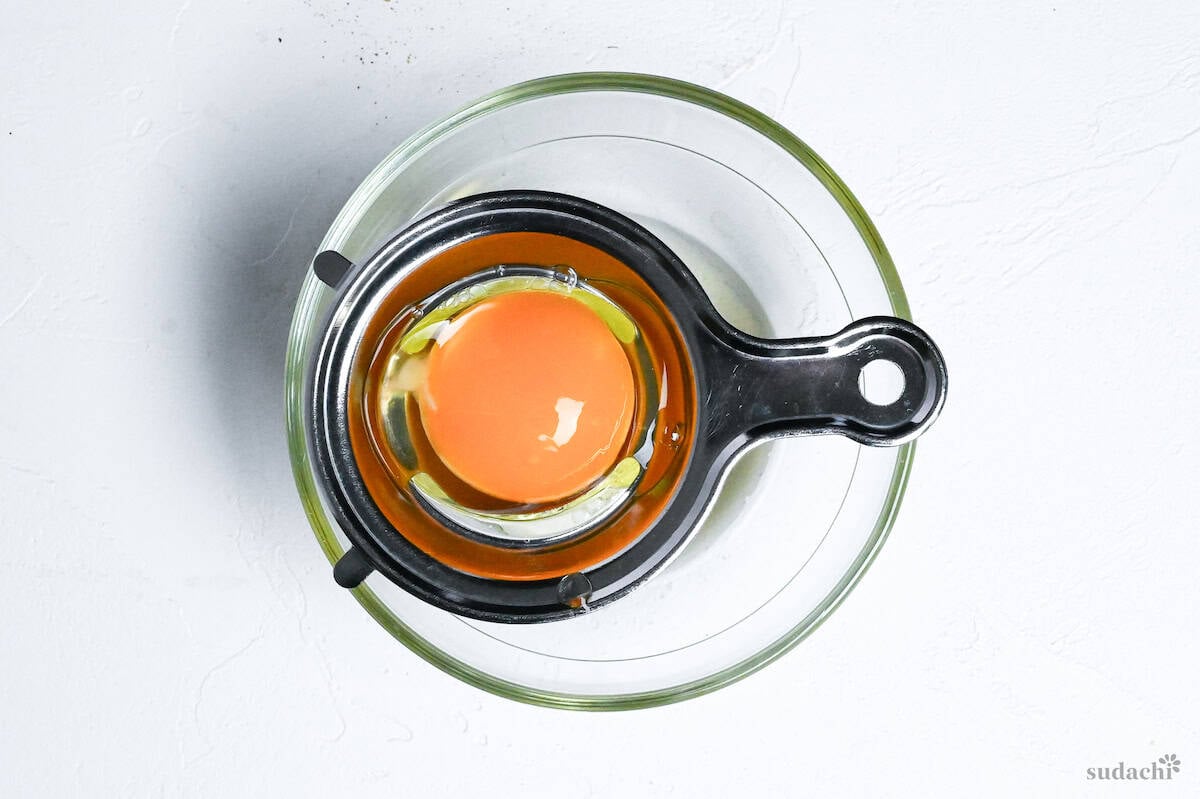
Drizzle your soy sauce, dashi granules, salt, oyster sauce, sugar, toasted sesame oil, and egg white directly onto the rice and stir vigorously for 10 to 15 seconds.
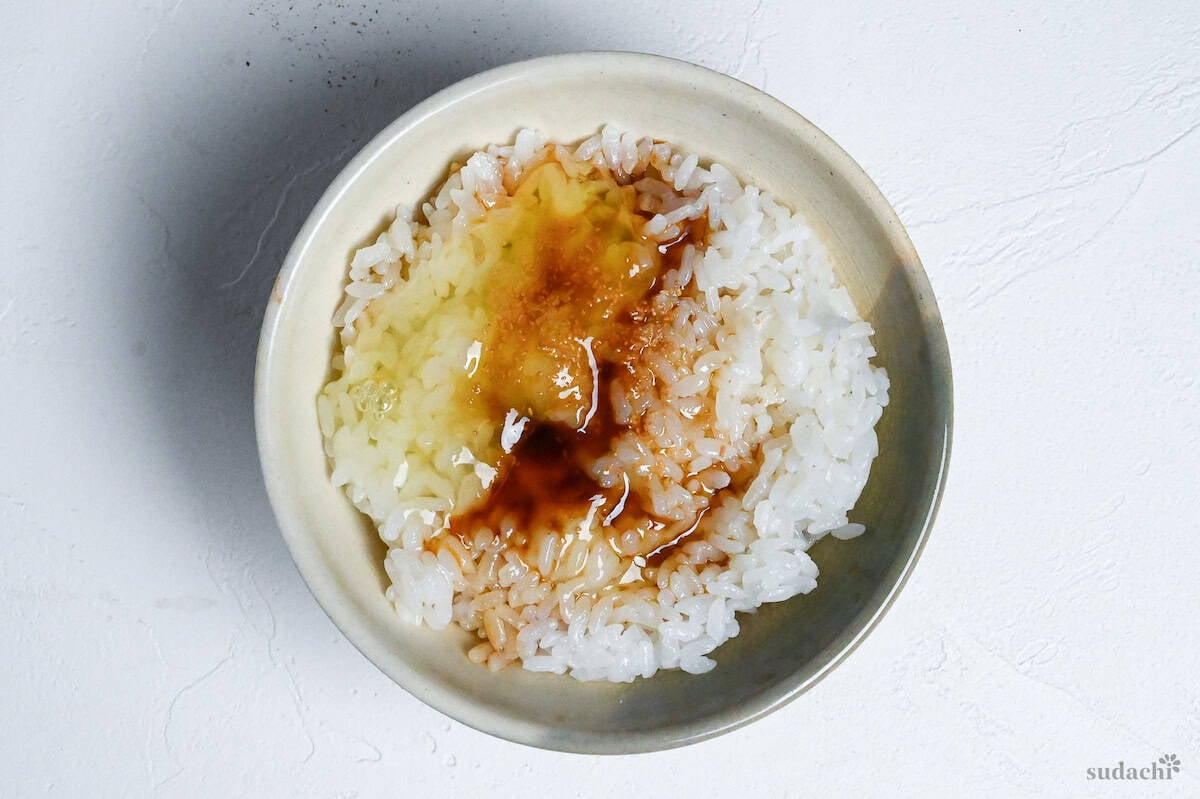
This front-loading step locks umami into the grains.
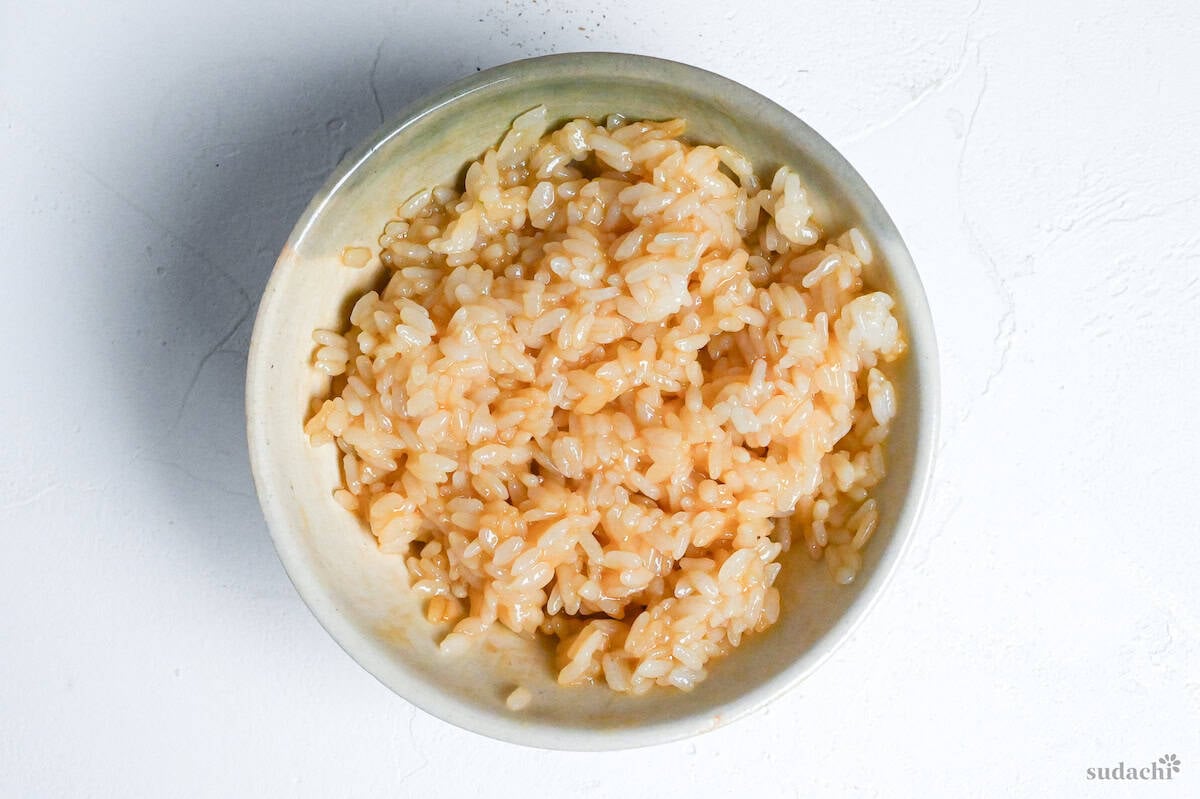
Gently nestle the reserved yolk in the center with your choice of toppings!
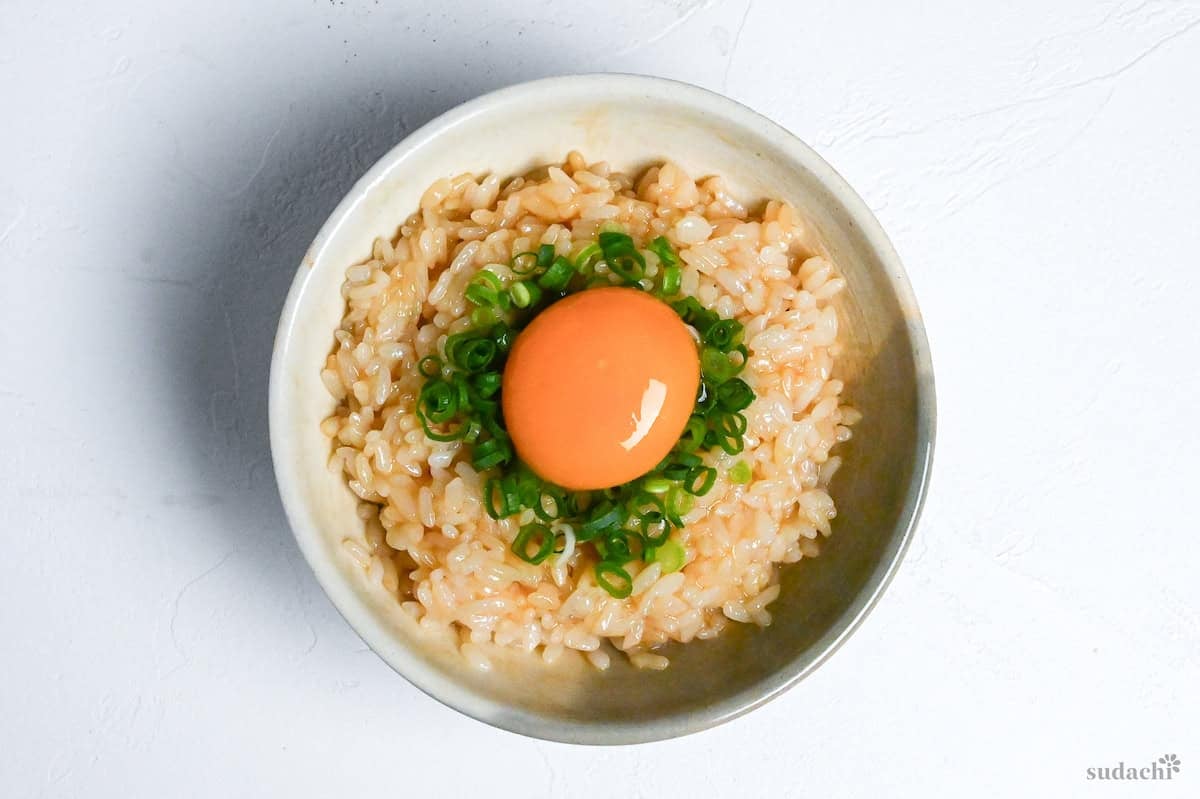
Then mix and enjoy!
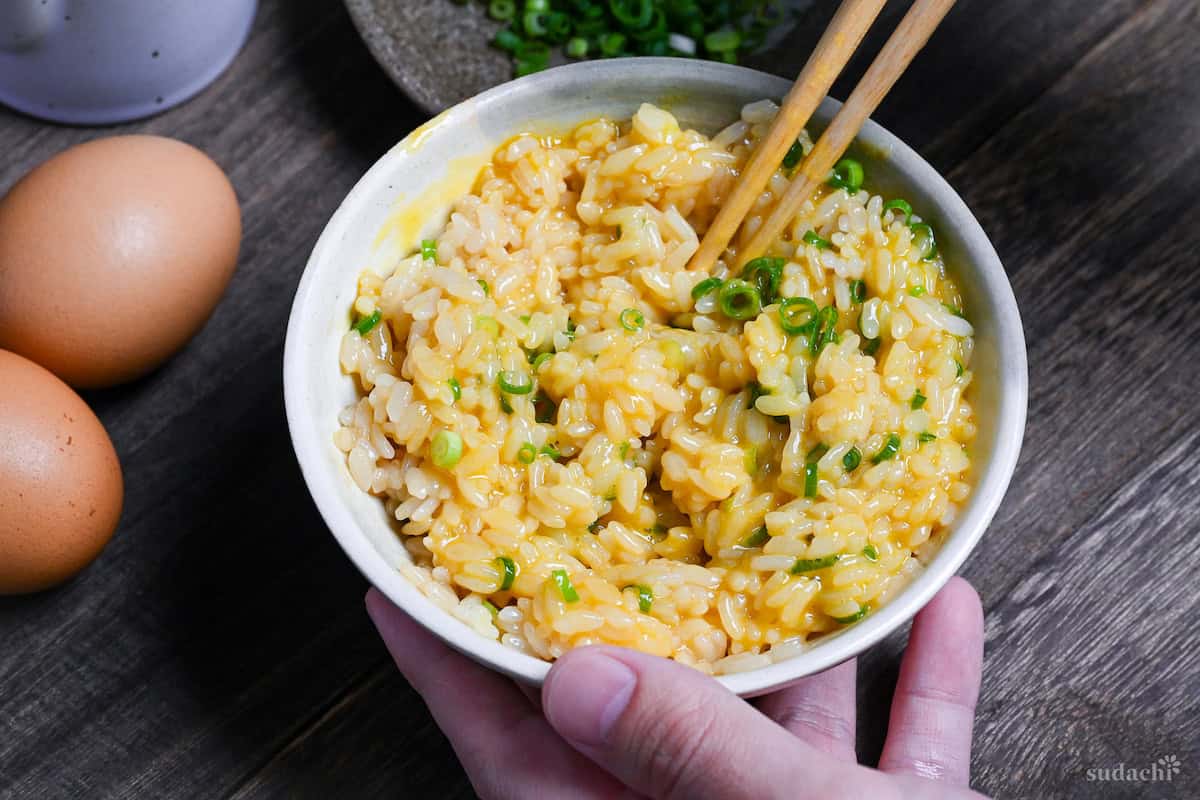
15 Toppings Ideas for Your Perfect TKG Experience
Tamago kake gohan is great on its own, but adding the right toppings can make it even better. I’ve experimented with countless variations of this dish throughout my lifetime. If you’re looking to try something new or get back to the basics of authentic Japanese flavors, here are some inspirations!
Natto (★★★★★)
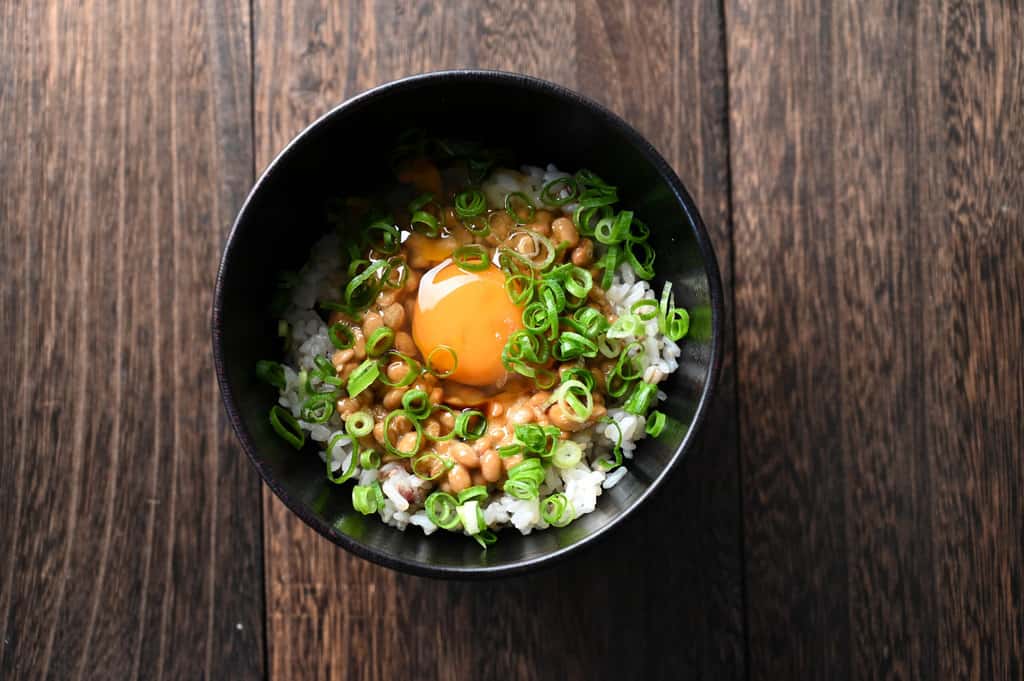
I just can’t ignore this classic combo! It’s always been my go-to combo, and it always will be. If you haven’t tried it yet or are still nervous about it, I highly recommend checking out my in-depth guide about natto!
- Flavor Profile: Earthy, funky, and umami-rich.
- Recommended for: Those already familiar with natto or adventurous eaters .
- Recipe: 1 pack of natto, 1 tsp soy sauce, topped with 1 tbsp chopped green onion.
Tanuki (★★★★★)
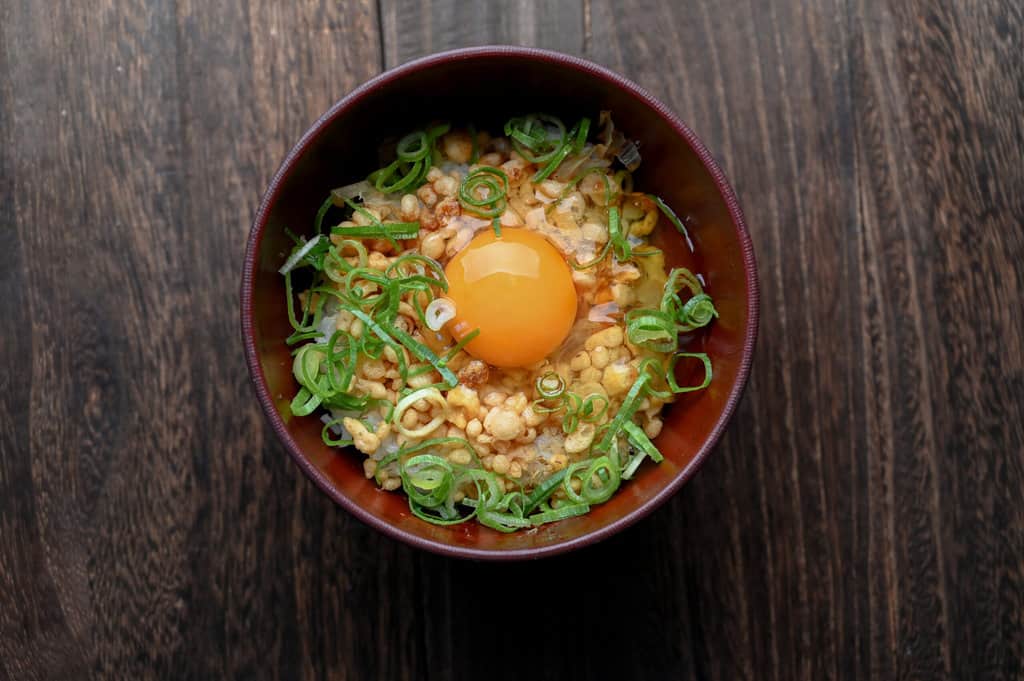
This is my ultimate Japanese-style TKG! “Tanuki” literally means raccoon dog, but in the cooking context, it refers to dishes with tenkasu (tempura bits). This crunchy, umami-packed dish is a real treat with a delicious textural contrast.
- Flavor Profile: Crispy, savory contrast with smoky bonito undertones and bright freshness from green onions.
- Recommended for: The authentic Japanese “junky” experience.
- Recipe: 1-2 tbsp tenkasu, 1 tbsp chopped green onion, and 1 tsp bonito flakes.
Avocado Wasabi (★★★★★)
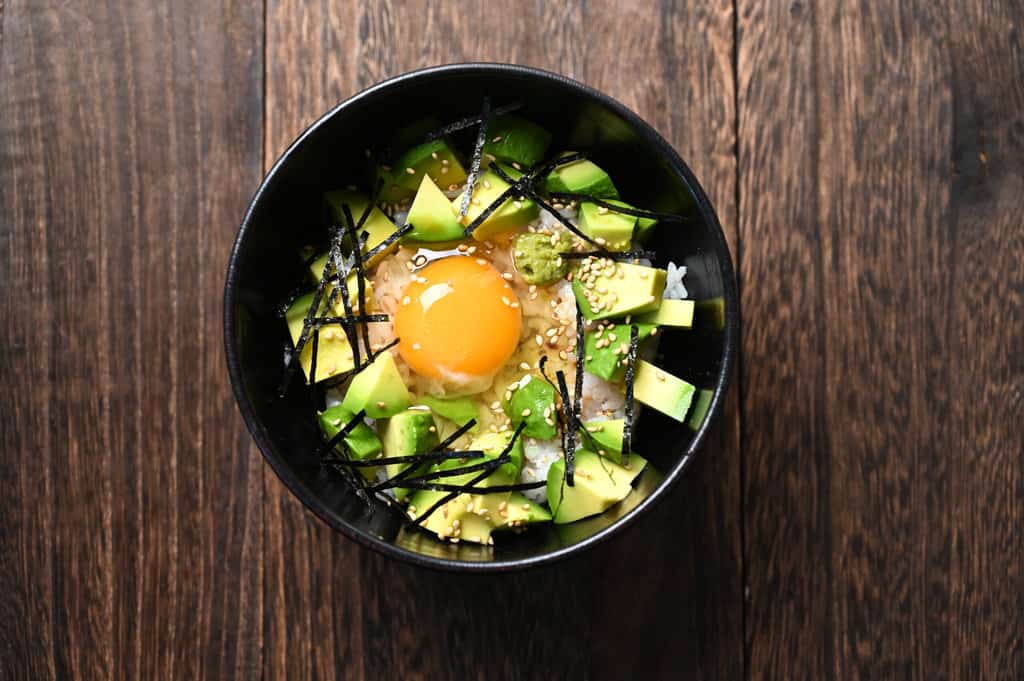
This modern spin on the classic adds creamy avocado and a touch of wasabi, a favorite combo in today’s Japanese cuisine. The sesame oil really brings the flavors together.
- Flavor Profile: Creamy avocado richness with a sharp wasabi kick, rounded by nutty sesame notes.
- Recommended for: Those seeking a heartier texture with familiar Japanese flavors.
- Recipe: 1/2 avocado, 1 tsp sesame seeds, 1 tsp sesame oil, 1/2 tsp wasabi paste.
Prosciutto & Parmigiano Reggiano (★★★★★)
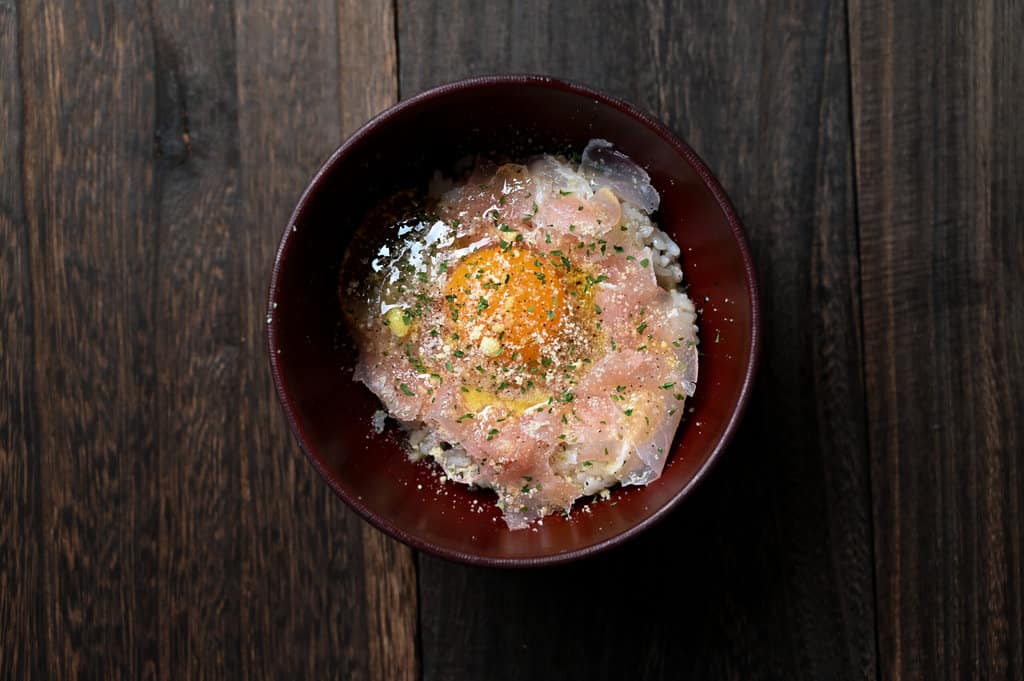
It’s an unexpected mix of Italian and Japanese flavors, and it works surprisingly well. The saltiness of the prosciutto and the rich, nutty flavor of the aged Parmigiano make for a whole different TKG experience.
- Flavor Profile: Salty, aged complexity with a meaty richness and herbal finish.
- Recommended for: Culinary adventurers seeking unexpected combinations.
- Recipe: 50g prosciutto, 1/2 tsp grated Parmigiano cheese, 1/2 tsp olive oil, a pinch of dried parsley, a pinch of salt and pepper (we don’t use regular TKG sauce for this variation).
Daikon & Shirasu (★★★★★)
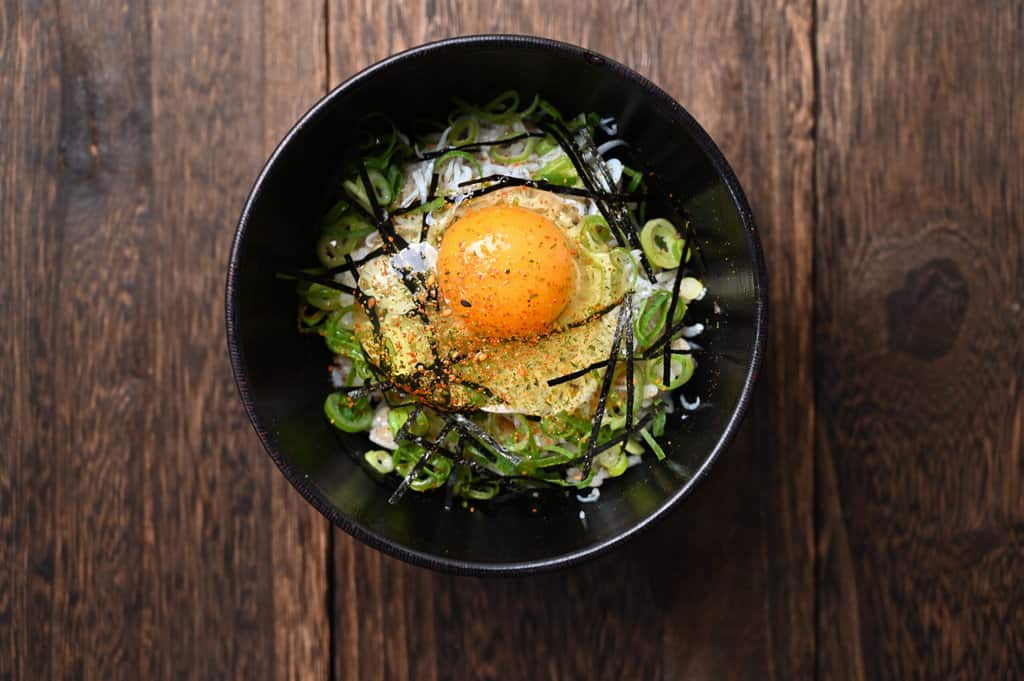
Another classic Japanese combo is boiled whitebait with freshly grated daikon radish. The slight sourness from the daikon perfectly balances the egg’s richness.
- Flavor Profile: Fresh, slightly peppery daikon balanced with delicate seafood notes and aromatic sesame.
- Recommended for: Those seeking an authentic Japanese flavor profile.
- Recipe: 1-2 tbsp shirasu, 1-2 tbsp grated daikon, 1 tbsp chopped green onions, 1 tsp kizami nori, 1 tsp sesame oil, and a pinch of shichimi pepper.
Okaka (★★★★★)
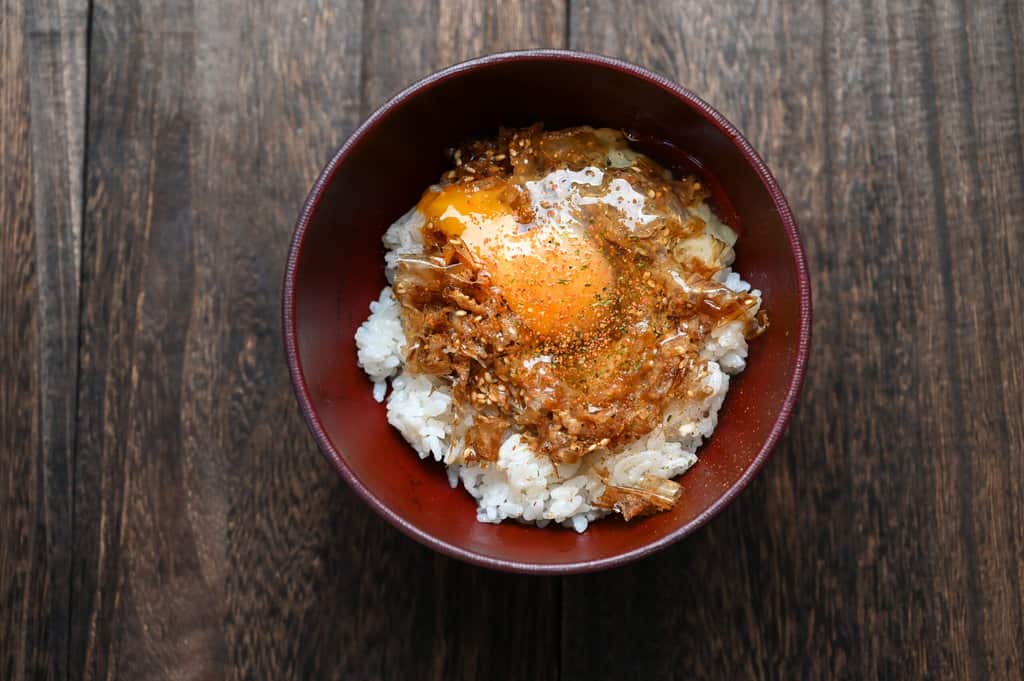
Seasoned bonito flakes create a deeply savory experience that’s popular in Japanese households. This topping is so flavorful that you might not even need extra soy sauce, just like with okaka onigiri rice balls.
- Flavor Profile: Intensely savory with smoky bonito depth and subtle oceanic complexity.
- Recommended for: Those who appreciate traditional umami flavors.
- Recipe: 5g bonito flakes, 1 tsp soy sauce, 1 tsp sesame seeds (mixed together), topped with a pinch of shichimi pepper (we don’t use regular TKG sauce for this variation)
Spicy Tobanjan (★★★★★)
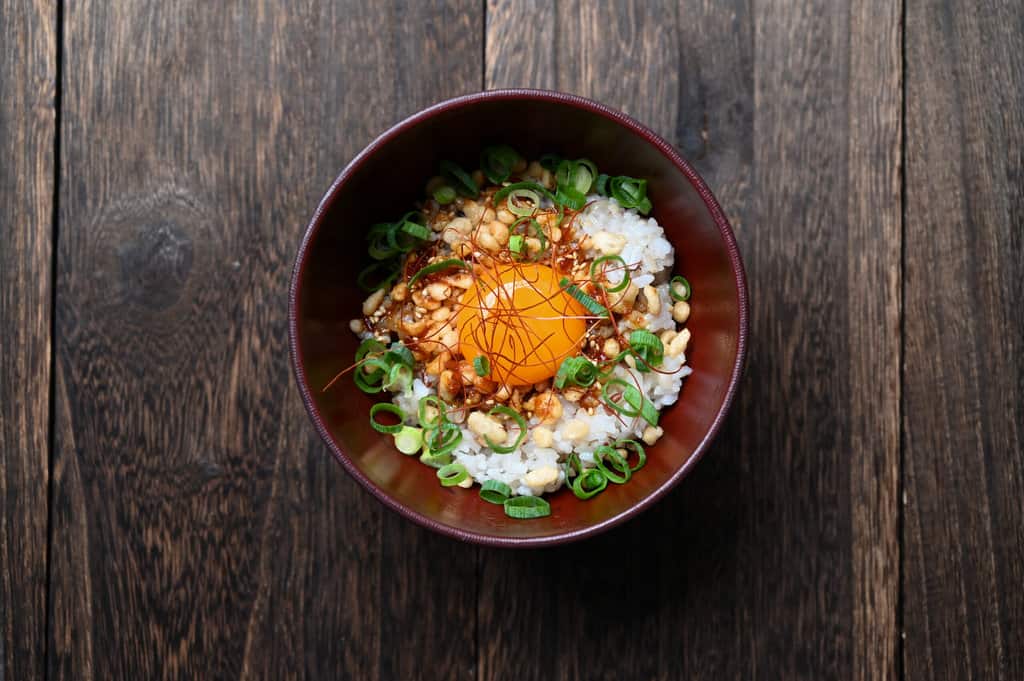
If you like things spicy, you’ll love this hot variation made with Chinese chili bean paste. It’s got a bold flavor that’ll warm you right up and leave you feeling satisfied.
- Flavor Profile: Bold heat with complex fermented bean paste depth and aromatic sesame.
- Recommended for: Those who appreciate spicy food.
- Recipe: 1 tsp soy sauce, 1/2 tsp sesame seeds, 1 tsp sesame oil, 1/2 tsp tobanjan (all mixed together), topped with 1 tsp chopped green onions and chili threads (we don’t use regular TKG sauce for this variation).
Cheese & Butter (★★★★☆)
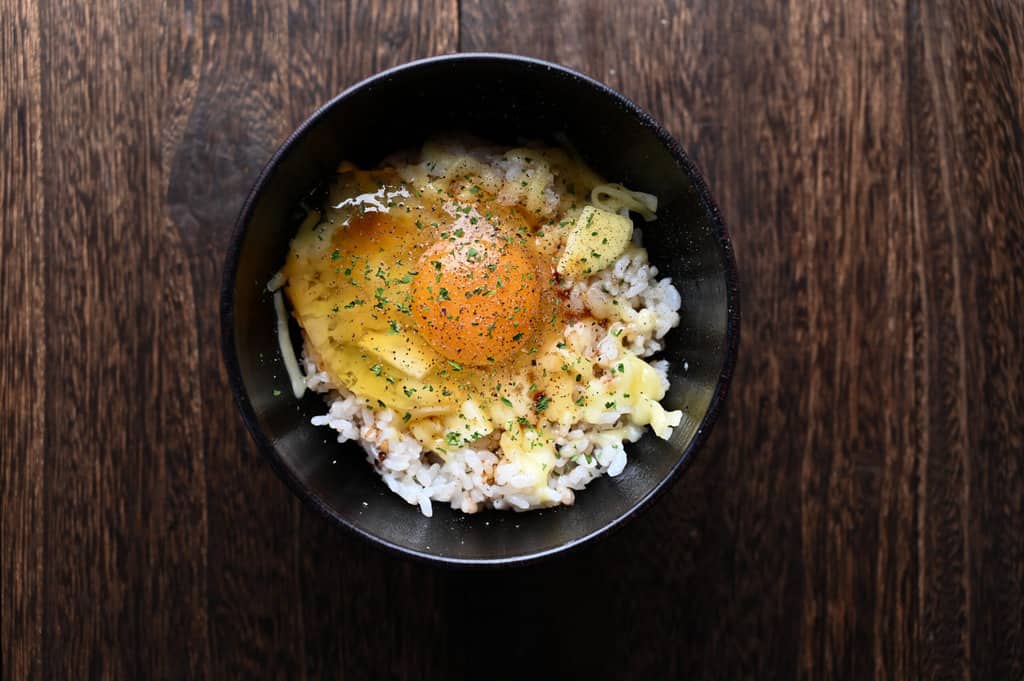
The blend of melted cheese and butter creates a rich and indulgent flavor that brings to mind Western comfort food, while still keeping the essence of TKG.
- Flavor Profile: Rich, creamy dairy notes with a savory-salty cheese finish.
- Recommended for: Those craving a richer, cheesier experience.
- Recipe: 1 tsp unsalted butter, 1 tbsp shredded gouda cheese, a pinch of black pepper, and parsley.
Bacon & Parmesan (★★★★☆)
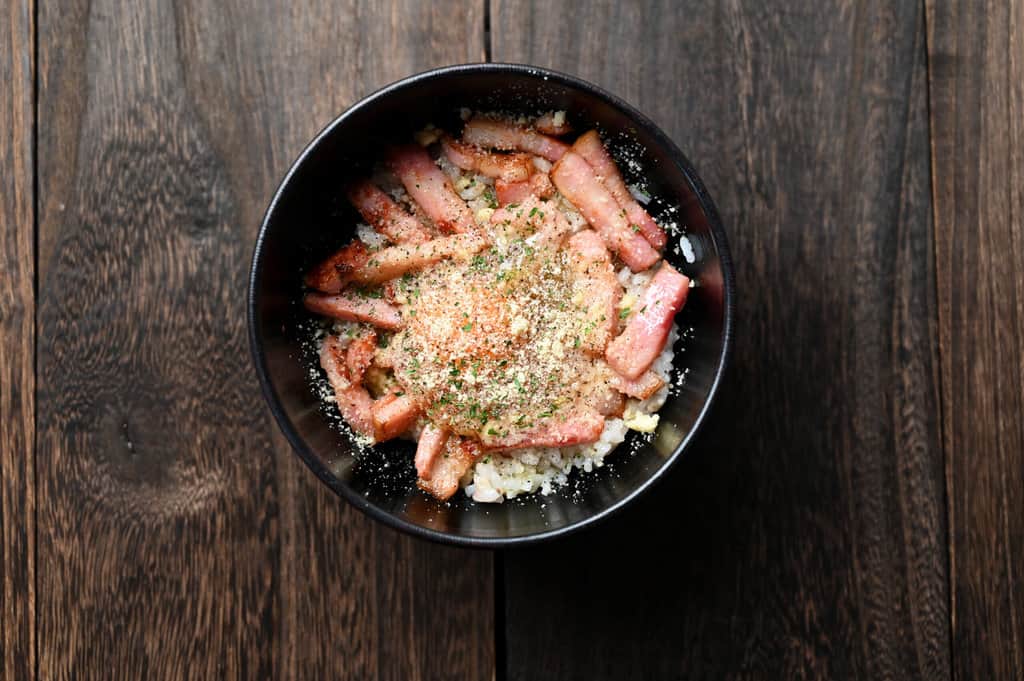
Jokingly called “carbonara-style TKG,” this hearty version features crispy bacon and savory hard cheese for a substantial meal.
- Flavor Profile: Smoky bacon depth with nutty, aged cheese sharpness.
- Recommended for: Bacon enthusiasts looking for a heartier dish.
- Recipe: 30g cooked bacon, 1 tsp parmesan cheese topped with dried parsley (we don’t use regular TKG sauce for this variation).
Taberu Rayu (★★★★☆)
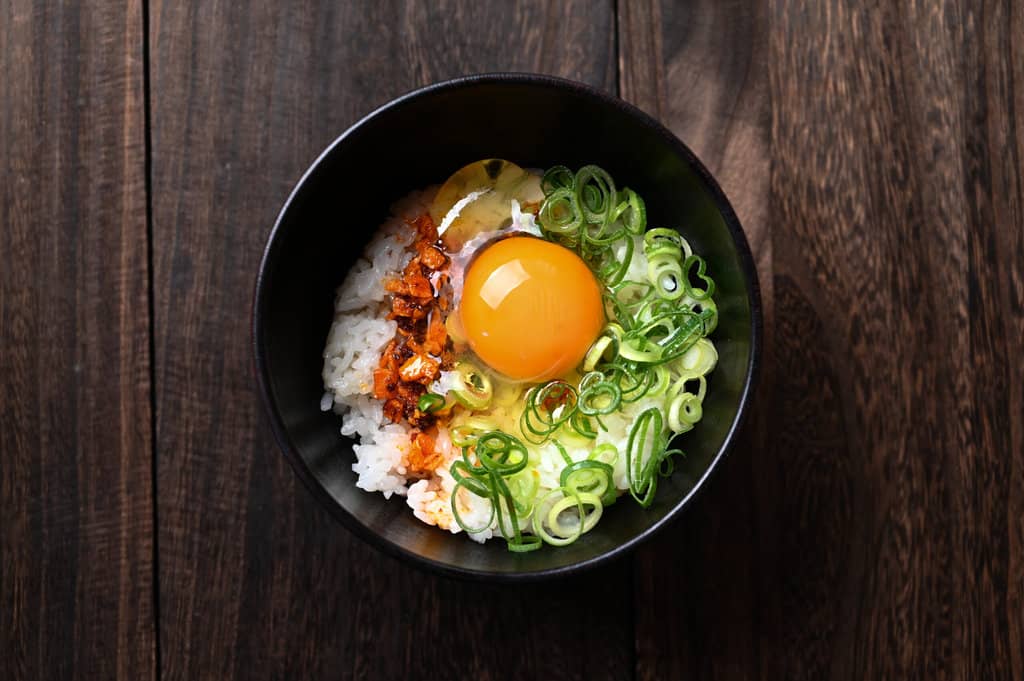
This modern Japanese condiment adds complex heat and texture to your TKG.
- Flavor Profile: Aromatic garlic-infused heat with complex roasted notes.
- Recommended for: Those seeking a contemporary Japanese twist.
- Recipe: 1-2 tbsp taberu rayu, 1 tbsp chopped green onion.
Junky Late Night Secret (★★★★☆)
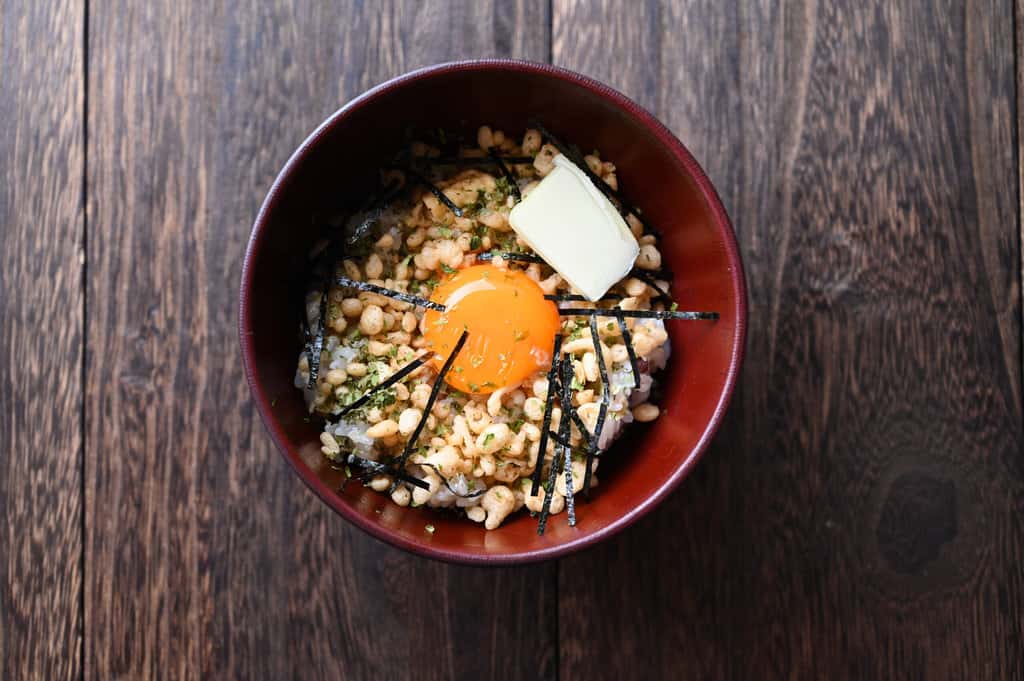
When comfort food cravings hit hard, this indulgent combination of butter, tempura bits, and umami-rich seasonings satisfies on a primal level.
- Flavor Profile: A riot of umami with crispy texture and rich buttery undertones.
- Recommended for: When you’re craving something richly satisfying.
- Recipe: 1 tsp unsalted butter, 1 tbsp tenkasu, 1 tsp sesame oil, 1 tsp soy sauce, 1/2 tsp aonori, 1 tsp kizami nori, 1/2 tsp Chinese-style chicken stock powder (we don’t use regular TKG sauce for this variation).
Yukari (★★★★☆)
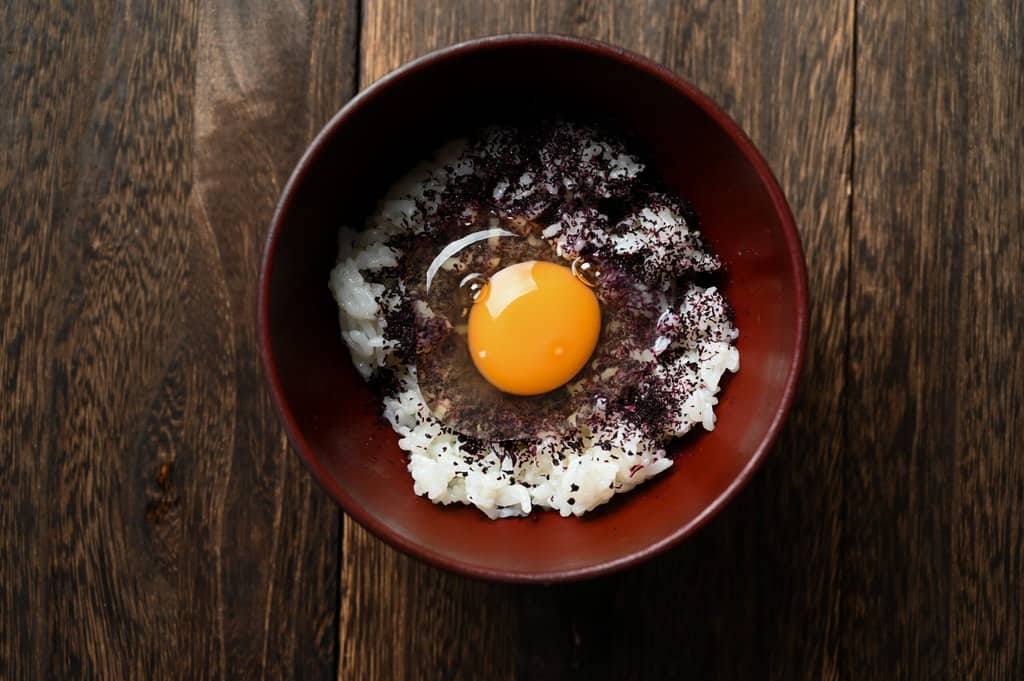
This unique Yukari furikake, made from red shiso leaves, adds a special tangy and salty flavor that totally changes the dish.
- Flavor Profile: Bright, tangy, and herbaceous with distinctive shiso character.
- Recommended for: Those who enjoy the distinctive flavor of red shiso or umeboshi.
- Recipe: 1 tbsp Yukari (we don’t use regular TKG sauce for this variation).
Meringue Style (★★★☆☆)
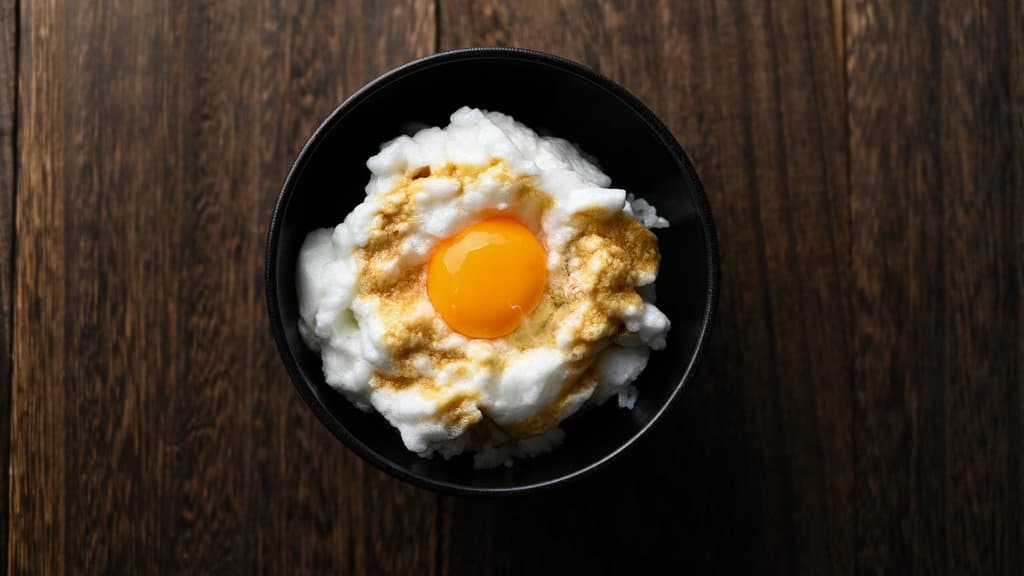
A modern technique where the egg white is whipped to create a cloud-like texture. While visually impressive, the effort-to-reward ratio is very questionable at least to me.
- Flavor Profile: Airy lightness with a clean, pure egg flavor.
- Recommended for: Those curious about trending Japanese preparations.
- Recipe: 1 egg white (whipped to soft peaks), 1 egg yolk, 1 tsp soy sauce (we don’t use regular TKG sauce for this variation).
Unsalted Butter (★★★☆☆)
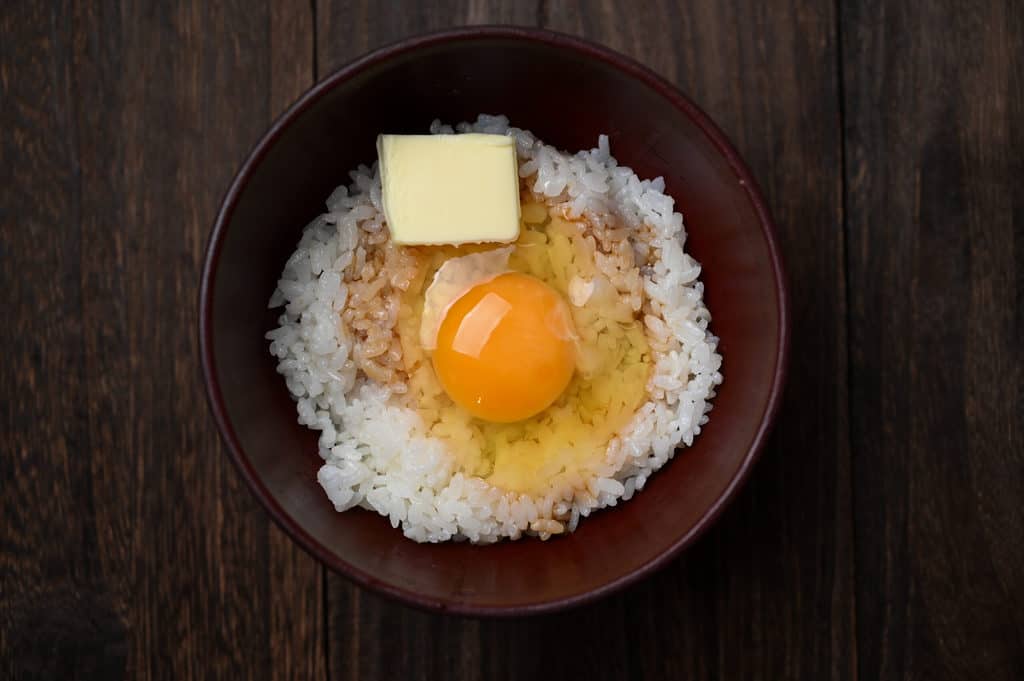
Known as “devil’s TKG” in Japan, this simple addition of a pat of butter enriches the dish with minimal effort. Of course, soy sauce and butter are a golden combo as well!
- Flavor Profile: Subtle richness with a velvety mouthfeel that enhances the egg’s natural flavor.
- Recommended for: Those looking for an easy way to add richness.
- Recipe: 1 tsp unsalted butter.
Sesame Oil & Salt (★★★☆☆)
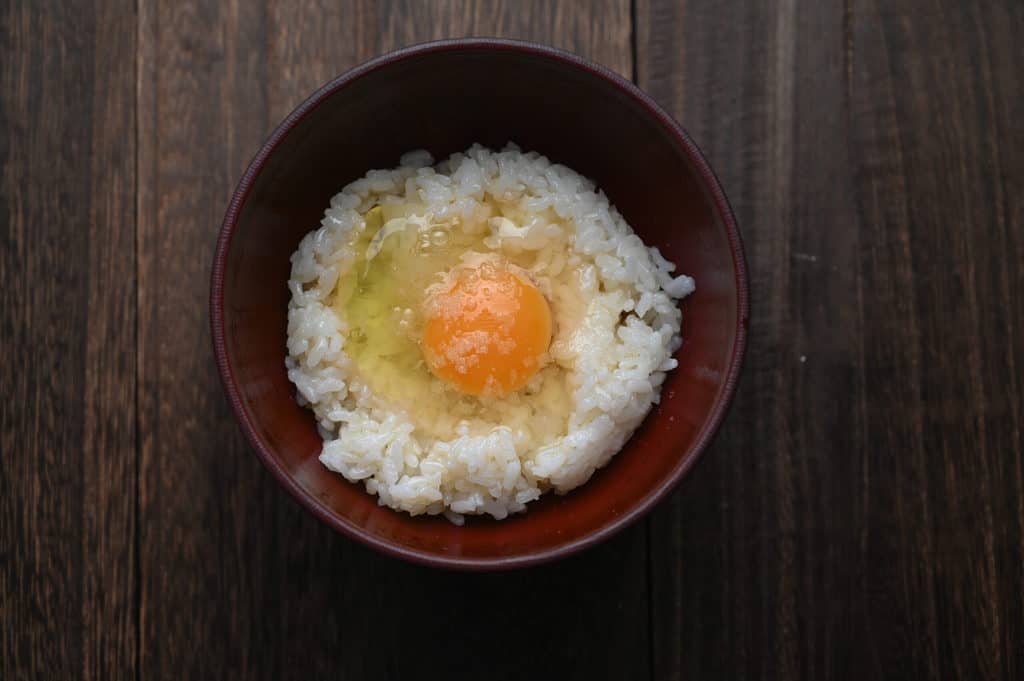
A popular alternative to traditional soy sauce seasoning, this combination offers a nuttier, more aromatic profile.
- Flavor Profile: Fragrant, toasted nuttiness with clean salt brightness.
- Recommended for: Those seeking a simple variation from the classic.
- Recipe: 1/4 tsp salt and 1 tsp sesame oil (we don’t use regular TKG sauce for this variation).
FAQ
So, did this simple dish die out? No, if anything, love for Tamago Kake Gohan has become even bigger over time! Young people started to call it TKG, and the dish has so many modern twists. There is even an organization called “Japan Tamago Kake Gohan Research Institute, Inc. (一般社団法人日本たまごかけごはん研究所).”
In modern Japan, eggs are recognized as a food that can be eaten raw.
Eggs in Japan are cleaned with disinfectants such as hypochlorite solution for food disinfection. Other safety measures are taken to prevent the attachment of pathogens, per the Government’s Hygiene Management Guidelines, before they are packed at egg sorting and packaging facilities.
The standards of eggs vary greatly from country to country, so wherever you buy eggs to use for TKG, always check if they’re suitable for raw consumption.
As long as you use pasteurized eggs that are free of pathogens, tamago kake gohan is safe to eat in the US and other countries. Please refer to the information sources available in your country:
USA (FDA)
UK (NHS)
Canada (Government of Canada)
Ireland (FSAI)
Australia (SA Health)
New Zealand (MPI)
Singapore (SFA)
Well, it’s just hot rice and raw egg…is there any history to it? Indeed, there is! Tamago kake gohan was originally created by a journalist named Kishida Ginko in the 19th century. Eggs began to be eaten in Japan in the Edo period (1603-1867), but at this time, they were still an expensive food, and it was not until the modern era (late 19th century) that eggs became a common household item.
It is believed that he encouraged people around the area to make the tamago kake gohan he invented. According to a magazine published in 1927, the seasoning was grilled salt and chili pepper! It’s completely different from what it is now!
After the 1950s, when eggs became a common item again, the dish attracted attention for its taste and nutritional qualities and became one of the favorites on the breakfast table.

I hope you enjoy this TKG article! If you try it out, I’d really appreciate it if you could spare a moment to let me know what you thought by giving a review and star rating in the comments below. It’s also helpful to share any adjustments you made to the recipe with our other readers. Thank you!
More 101 Articles
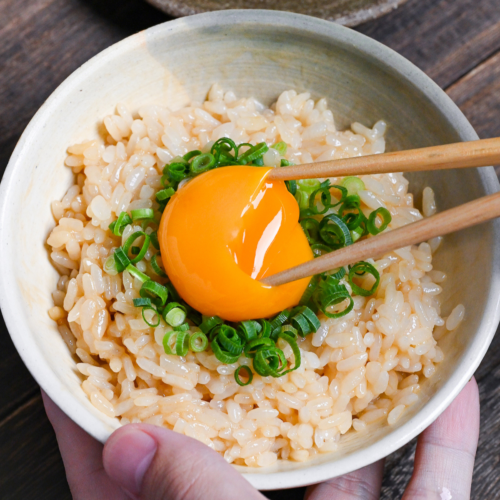
Tamago Kake Gohan (TKG Japanese Egg on Rice)
Ingredients
- 150 g cooked Japanese short-grain rice warm, not cold or stale
- 1 pasteurized egg
- 1 tsp Japanese soy sauce (koikuchi shoyu)
- ¼ tsp oyster sauce
- ⅛ tsp toasted sesame oil
- ⅛ tsp dashi granules
- ⅛ tsp sugar
- 1 pinch salt sea salt or kosher
- finely chopped green onions
My recommended brands of ingredients and seasonings can be found in my Japanese pantry guide.
Can’t find certain Japanese ingredients? See my substitution guide here.
Instructions
- Start by measuring out 150 g cooked Japanese short-grain rice.

- Separate the yolk and white of 1 pasteurized egg.

- Pour the egg white over the rice and add 1 tsp Japanese soy sauce (koikuchi shoyu), ¼ tsp oyster sauce, ⅛ tsp toasted sesame oil, ⅛ tsp dashi granules, ⅛ tsp sugar, and 1 pinch salt.

- Mix thoroughly for about 10-15 seconds or until the ingredients are combined and every grain is evenly coated.

- Make a bed of finely chopped green onions and place the egg yolk in the center.

- Mix before eating and enjoy with your favorite toppings!

Notes
- Always use pasteurized eggs intended for raw consumption, or source fresh eggs from a trusted supplier specifically labeled safe for raw use.
- It’s also common to just add the egg straight to the rice (rather than whisking it separately).
- It’s important to mix thoroughly before eating.
- Tip: I often freeze 150g portions of cooked rice and then simply microwave when I make tamago kake gohan, this is convenient in the morning when time is limited!
- If you don’t have a rice cooker, check out my post “how to cook Japanese style rice on the stove“. It also includes tips for freezing.
- Serve immediately after mixing as the dish doesn’t hold well; the egg will begin to cook if left on hot rice too long.
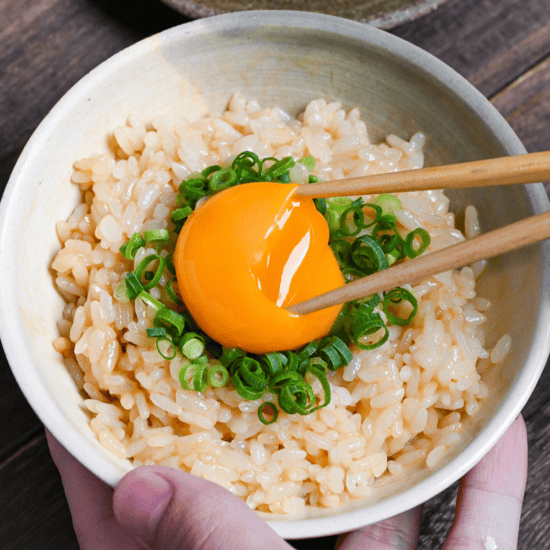



What kind of Japanese soy sauce do you recommend for TKG?
Hi Alex, great question!
I personally use regular koikuchishoyu (the standard dark soy sauce in Japan) but there is actually a special soy sauce especially for TKG which contains kombu and bonito flakes. Essentially, it’s similar to tsuyu sauce but less sweet. I don’t know if it’s easy to buy abroad, but it’s literally called “tamago kake gohan shoyu”. Here it is on Amazon Japan if you want to see what it looks like.
Thank you for your question!
First time trying this I made it with a soft boiled egg..working my way to raw. Is there a reason a raw egg is preferred? More nutrients? Less prep?Thank you for sharing!
Hi Carrie,
Soft-boiled eggs are a good start for sure! In my opinion, I think it’s mainly to do with quick and easy prep in the morning. That said, we do enjoy eating raw eggs with dishes such as sukiyaki (for dipping) etc. and there are also some Japanese people who don’t like eating raw egg too! Maybe your next step could be just the yolk and gradually add more egg white each time. Hope you enjoy!
I grew up eating TKG the way mom prepared it with egg whisked with soy sauce and over rice. As an adult and having my own chickens that lay fresh eggs I learned of a different way to eat it. First separate the yolk and place the egg whites in the bowl with the hot rice. Mix the white and the rice together where it will fluff up a bit giving is like a meringue type feel. Then place the yolk and drizzle the soy or TKG sauce and eat. It definitely has a different taste and feel that I enjoy than any other preparation. When adding other toppings, I put them on the rice and then place the yolk after the additional toppings. Have you heard or tried preparing it this way?
Hi Lica,
Making meringue with the egg whites is a trendy way to make TKG in Japan but I haven’t heard of fluffing it up with the rice. Thank you for the suggestion, I’ll try it next time!
Thanks again!
All the best,
Yuto